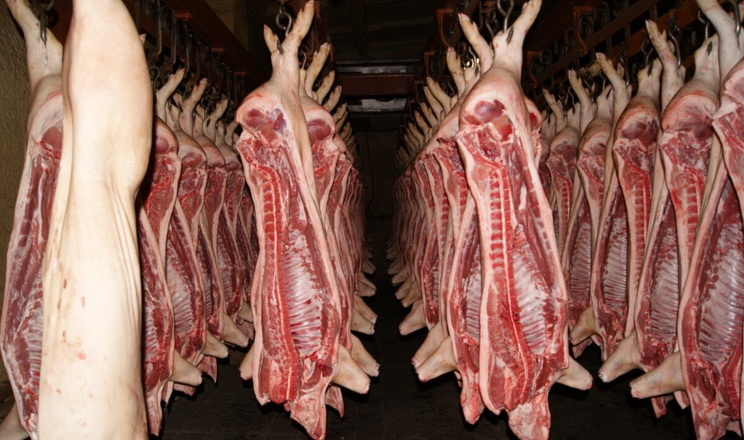Brazilian pork exports reached 96,891 tons in October

Brazilian pork exports once again showed excellent performance in October, totaling 96,891 tons (fresh + processed). The average price per ton was USD 2,422.53, the highest level of the year. However, some points deserve attention and may affect the pace of shipments over the next few months.
The first point is that China was decisive for the result of the month, with 46 thousand tons, which corresponds to a share of 47.48% of the total exported by Brazil in October. In recent months, China has expanded purchases to meet the demand for the Lunar New Year, the country’s main holiday, which will take place at the end of January 2023. So, new purchases for that date become unfeasible for China due to logistics. In addition, live hog futures contracts traded in Dalian begin to signal a downward trend, showing that market agents expect an increased supply in the Chinese market in the first half of 2023, which must lead the country to reduce its imports. The January contract closed last Thursday (10) at 21,155 yuan per ton, down 12% from the peak of 24,045 yuan registered on October 24. It is also worth noting that the price curve until September 2023 is moving downward. The September contract is positioned at 17,355 yuan.
Margins have been positive in China since the second quarter of this year, a factor that is leading the sector to invest, which will result in production growth in 2023. In October, USDA projected that the Chinese will produce 52 mln tons in 2023, against 51 mln this year. With greater production, there will be less need for imports. The USDA estimate is that China will import 1.7 mln tons next year against the 1.8 mln tons expected in 2022.
To complete the picture of China, its currency, the yuan, is in process of devaluation, which makes its imports more expensive. There is capital flight in China, with the adoption of an expansionary monetary policy while mature economies adopt a tougher stance toward interest rates. This factor is important for Brazil, considering that for Brazilian pork to remain attractive in the international scenario, the real cannot appreciate against the dollar. Thus, internal factors need to be closely monitored, such as the choice of the economic team by the new Brazilian government and the fiscal policy for next year. The possible expansion of government spending and the monetary base may even stimulate consumption at first, but it tends to create a bad environment for inflation and contract economic activity in the future with capital flight.
Another fact that drew attention in October was the further reduction in purchases from the Philippines, which reached only 4,400 tons. The Asian country is the third main destination for Brazilian pork this year. In August, imports had reached 11,500 tons, and 6,400 tons in September. Philippine production suffers from African swine fever but is expected to start to recover in 2023, which must impact its imports. According to the latest USDA report, the Philippines must import 450,000 tons in 2023, against 550,000 tons in 2022.
Back to the numbers on Brazil, between January and October 2022, 904,627 thousand tons were exported, down 4.55% from the 947,756 thousand tons registered in the same period last year. As for the accumulated revenue, it totaled USD 2.059 bln, down 8.48% from the USD 2.250 bln registered in the accumulated volume of 2021.
Next year will be challenging for the Brazilian swine industry, not only because of the described export scenario, but also because of the forecast for the expansion of national pork production even with the current crisis scenario. The increase in domestic availability will hinder the price recovery along the chain, so domestic demand will be critical. The evolution of prices of its competitors, beef and chicken, must be closely monitored. The possible decline of these proteins could be an additional complicating factor for pork. Production cost is another important point, a variable that affects the sector’s profitability. Corn must be under stress, especially in the first half of 2023 due to soybean logistics. The soybean crop will be a record if the weather evolves well, being estimated above 150 mln tons.
Read also
Wheat in Southern Brazil Impacted by Dry Weather and Frosts
Oilseed Industry. Leaders and Strategies in the Times of a Great Change
Black Sea & Danube Region: Oilseed and Vegoil Markets Within Ongoing Transfor...
Serbia. The drought will cause extremely high losses for farmers this year
2023/24 Safrinha Corn in Brazil 91% Harvested
Write to us
Our manager will contact you soon



